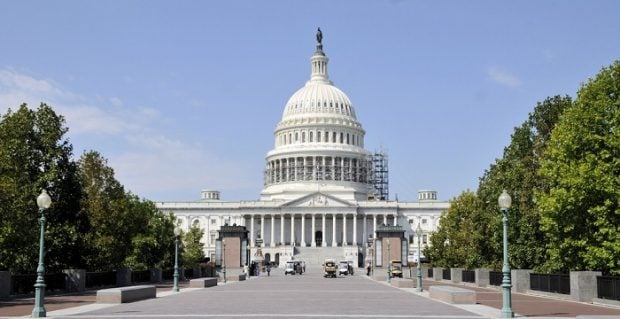 When the SECURE Act was marked up by the Ways and Means Committee last month, committee members professed the intention to consider a second retirement bill before August. (Photo: Shutterstock)
When the SECURE Act was marked up by the Ways and Means Committee last month, committee members professed the intention to consider a second retirement bill before August. (Photo: Shutterstock)
The Open Multiple Employer Plan provisions of the SECURE Act, which passed in the House of Representatives this week on a nearly unanimous vote, do not extend to not-for-profit 403(b) defined contribution plans.
But industry sources, both on and off the record, are indicating that lawmakers are intent to extend the Open MEP retirement plan model to non-profits.
“We understand that Congress is looking to address the issue of Open MEPs to include 403(b) plans in retirement legislation to be considered after the SECURE Act and the Retirement Enhancement and Savings Act are enacted,” said Eric Levy, executive vice president, AIG Retirement Services, in an email.
Related: Open MEPs or not? Let the legislative sausage-making begin
When the SECURE Act was marked up by the Ways and Means Committee last month, committee chair Richard Neal, D-MA, and ranking member Kevin Brady, R-TX, both professed the intention to consider a second retirement bill before August, when Congress recesses for the summer.
The Open MEP provisions in the SECURE Act allow unaffiliated employers to pool retirement assets under one 401(k) plan. Retirement plan providers are allowed to sponsor MEPs, but must register with the Labor Department.
Individual employers in prospective MEPs maintain a fiduciary responsibility to monitor plan providers, who will also be fiduciaries, but the fiduciary function of investment selection will be passed from the employer to the plan provider, and potentially shared by a third-party 3(38) plan advisor.
The Open MEP model is designed to stimulate wider adoption of retirement plans in the private sector. Employers in pooled plans would ostensibly have mitigated fiduciary liability and a lightened administrative load. Participants could have greater scale in pooled plans, and access to cheaper, institutionally priced investment funds.
“We are encouraged by the House passage of the SECURE Act and supportive of the Senate taking up important retirement issues for Americans,” said Levy. “Open MEPs will be set up to help address the coverage issues and make plans more available to more Americans. As written, this will help many people who work in the for-profit sector of the economy but it does not specifically impact those working in the not-for-profit sector.”
AIG Retirement Services, the recent rebrand of VALIC, is a major record keeper in the 403(b) market. Between the retirement plans it administers and its annuity and mutual fund business, AIG oversees $230 billion in retirement assets under management.
Levy said there is substantial need within the non-profit sector for access to workplace retirement plans. 403(b) plans are prominent among non-profit universities, public schools, and hospitals. But other areas of the non-profit sector, like the cultural, charitable, and human service sectors—which Levy said include food banks, theatres, ballets, homeless shelters, and rebuilding organizations—are commonly without retirement plans.
“Many of these types of organizations are small and do not have the resources to provide retirement plans to their staffs, who do very important work in our communities,” said Levy. “The ability for these organizations to join an Open MEP designed for like organizations will help drive further expansion of retirement savings to more Americans.”
The mounting consensus in the retirement services industry is that the SECURE Act, and RESA in the Senate, will be consolidated and signed into law this year.
But considerable questions remain as to how Open MEPs would be regulated. One question is whether the Labor Department will craft a prohibited transaction exemption that will allow fiduciary MEP providers to build investment menus with proprietary products.
Some in industry expect Open MEPs will incentivize the migration of existing sponsors of single-employer 401(k) plans to pooled plans.
But Levy does not see that outcome in the non-profit sector.
“As it relates to public schools who offer 403(b) plans, we do not see the advent of Open MEPs having a significant impact as they already have plans and many have the option to manage as they see fit today,” said Levy. “We expect the primary impact to be in the broader cultural, charitable and human services sectors.”
Read more:
© 2025 ALM Global, LLC, All Rights Reserved. Request academic re-use from www.copyright.com. All other uses, submit a request to [email protected]. For more information visit Asset & Logo Licensing.








